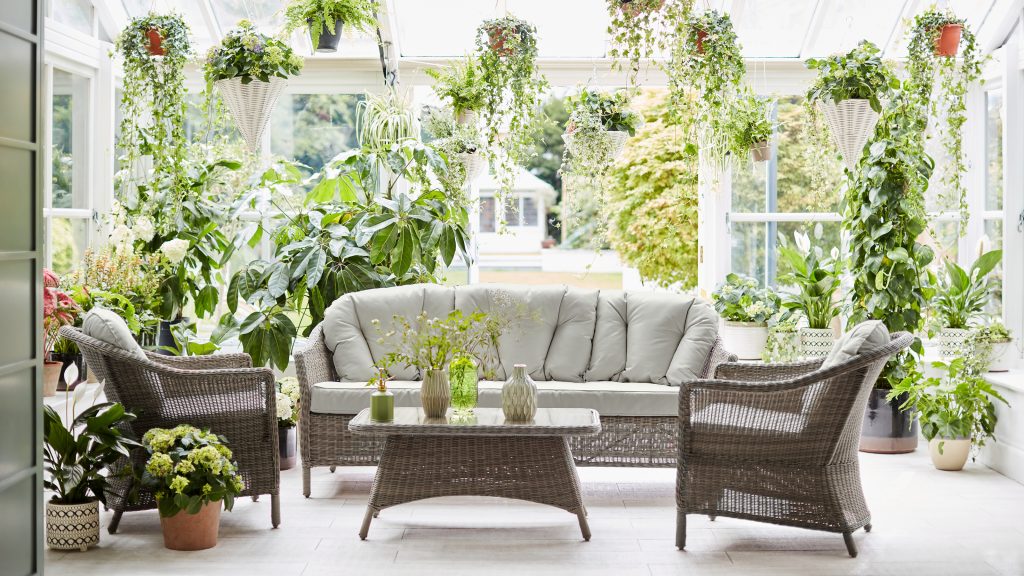A conservatory room can be a great place to enjoy gardening or relaxing. You can bring the garden into your conservatory, whilst stilling sheltered from all weathers. You can add wicker chairs, tables and plant cacti and succulents and add hanging plants to create drama. You can also grow Pincushion cacti, which thrive in summer heat. You can also use garden items for crafts. If you have a child, consider putting a play area in the conservatory.
Hanging plants create drama
A conservatory room is an ideal place to incorporate hanging plants. They add depth and a splash of colour to the room. You can add citrus trees and other tropical plants to break up the decor. You can also mix different plant varieties for drama and contrast. These plants are easy to maintain and will provide your conservatory room with a natural air.
In addition to hanging plants, you can use trailing plants to create symmetry over your seating area. The Conservatory Archives in East London, for example, makes use of trailing succulents and ferns to create an eclectic look.
Pincushion cacti thrive in the summer heat
Pincushion cacti are drought tolerant plants, and do not require frequent watering. However, they should be watered at least once a week if the soil is dry. For optimal plant health, water your plants with rainwater or distilled water. Avoid using tap water because it contains mineral salts and can damage your cacti.
Pincushion cacti are easy to care for and grow well in full sunlight. They like to be placed near a window or near a sunny location. A small amount of afternoon shade can also help them grow.
Succulents are a good choice for a conservatory
Succulents are hardy plants that are easy to grow in a conservatory. Many species are adapted to shady climates. They include aloe vera and string of pearls. These plants can tolerate cool and hot weather and can survive for long periods of time.
Succulents come in a variety of shapes and sizes, making them an excellent choice for the conservatory environment. Their leaves are fleshy and store water, so they can survive the conservatory climate. These plants also have unique flowers.
Stacking shelving
You can use stacked shelving in your conservatory room to keep plants and accessories organized. The height of the shelves can be adjusted to accommodate growing plants. Alternatively, you can buy completely open shelving that will allow for more light. This type of shelving is more forgiving when it comes to bigger, trailing plants. However, make sure to choose shelves that can support the weight of plants and water.
You can also choose to add some colourful furniture. A bold splash of colour can make a big difference. You can buy furniture in a bold hue or use painted wooden pieces to add some extra flair. You can also opt for a plush and comfortable armchair for reading or relaxing.
Citrus trees thrive in a conservatory
Citrus trees have a great reputation in Italian gardens and have been introduced to Europe in the 19th century. They are a popular feature of Renaissance gardens, and have also been grown extensively throughout the United Kingdom. Citrus trees are very hardy and require little pruning once established. Citrus trees should be planted in the spring or autumn, depending on your climate. They prefer well-drained soil and infrequent deep watering.
Citrus trees are subtropical plants, so they thrive in warm, humid, semi-tropical climates. However, they are also tolerant of the colder climates of the Mediterranean region, where winters can drop to zero degrees. They need a lot of light during the summer and a little less light in the winter.
Succulents
Succulents are a great choice for a conservatory room garden. These plants don’t require much water, but do require a moist compost from spring to autumn. In winter, watering should be reduced or cut to half. They also need a bit of shade, so you’ll need to mist them regularly.
The most popular variety is the strelitzia. The most common variety is strelitzia reginae, but it is also possible to grow strelitzia nicolai, which is more suited to a large conservatory. Other popular choices include spider lilies, which are native to tropical and southern parts of North America. Both types produce fragrant flowers and are ideal for conservatories.

